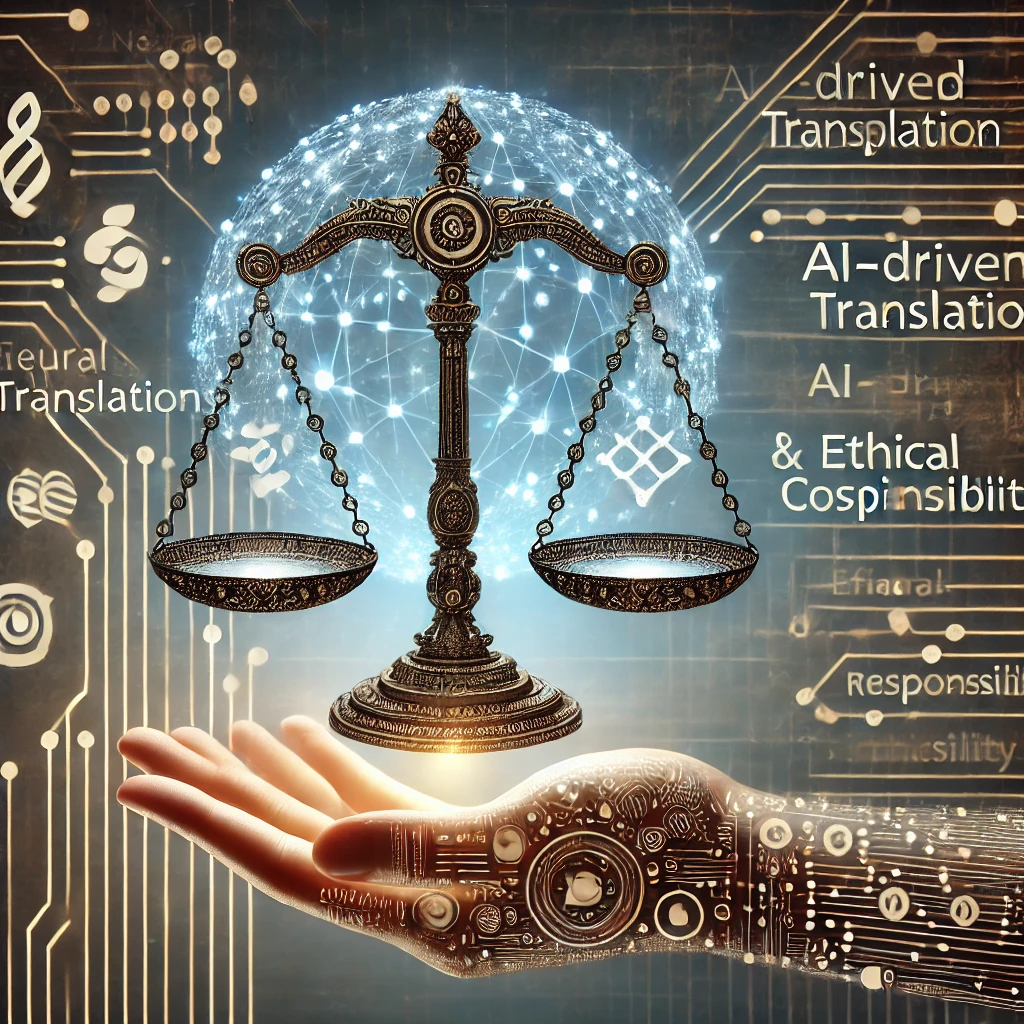1. Introduction: The Impact of Toxic Mistranslations
Mistranslations in language translation systems extend beyond mere errors; they can inadvertently introduce “toxicity” by generating offensive or harmful language that distorts the original meaning. This issue is particularly pronounced when translating words or phrases that lack direct equivalents in the target language, leading to misunderstandings that can have serious repercussions. While some mistranslations may result in humorous outcomes, the stakes are significantly higher in critical fields such as medical, immigration, and legal contexts, where precision and accuracy are paramount. In the medical field, for instance, a mistranslation could lead to incorrect dosages or misunderstandings of patient symptoms, potentially endangering lives. Similarly, in immigration processes, errors in translating legal documents or personal information can result in wrongful denials or approvals, affecting individuals’ lives and statuses. Legal scenarios are equally sensitive; mistranslated contracts or testimonies can undermine justice, leading to wrongful convictions or the invalidation of agreements. Beyond these high-stakes areas, mistranslations can perpetuate stereotypes and cultural insensitivities, further embedding toxic language into communication. This phenomenon underscores the importance of not only improving translation algorithms but also incorporating cultural and contextual understanding to minimize errors. Additionally, the role of human oversight in conjunction with AI translation tools is crucial to catch and correct potentially harmful mistranslations before they cause real-world consequences. By addressing these challenges, we can work towards more reliable and respectful cross-cultural communication, ensuring that language barriers do not translate into barriers to safety, justice, or dignity.

2. Linguistic Nuances: Idioms, Metaphors, and Cultural References
Linguistic nuances such as idioms, metaphors, and cultural references pose significant challenges for AI translation systems, often leading to mistranslations that add toxicity. Idiomatic expressions, which carry meanings that are not directly inferable from the individual words, can be particularly problematic. For example, the English idiom “kick the bucket” meaning “to die” might be mistranslated literally, resulting in confusion or unintended offense in another language. Similarly, metaphors that are deeply rooted in a specific culture’s experiences and values may not have direct counterparts, causing AI to either render them nonsensically or substitute them with inappropriate phrases. This lack of understanding can result in translations that not only fail to convey the original message but also introduce harmful or offensive language. Additionally, cultural references that resonate positively in one culture might be neutral or negative in another, leading to unintended toxicity. For instance, a reference to a culturally significant event or figure might be misinterpreted, causing offense or misunderstanding. Addressing these issues requires AI translation systems to incorporate a deeper understanding of cultural contexts and to recognize when idiomatic or metaphorical language is being used. Enhancing AI’s ability to handle such linguistic subtleties can significantly reduce the risk of toxic mistranslations and improve the overall quality and reliability of translations across different languages and cultures.

3. Structural Differences: Syntax and Grammar Challenges
The structural differences between languages, including syntax and grammar, can contribute to mistranslations that introduce toxicity into communication. Each language has its own set of rules governing sentence structure, word order, and grammatical agreements, which AI translation systems must navigate to produce accurate translations. When these structural elements are not properly accounted for, translations can become jumbled or lose their intended meaning, potentially leading to offensive or harmful interpretations. For example, in languages with gendered nouns, mistranslating the gender can result in unintended disrespect or offense. Additionally, languages that employ different forms of politeness and formality may cause AI to default to an inappropriate level of respect, leading to perceived rudeness or insensitivity. Furthermore, the use of passive versus active voice can alter the perceived responsibility or blame in a statement, which is especially critical in legal and professional settings. Misalignments in tense, aspect, or modality can also distort the message, making it misleading or offensive. To mitigate these risks, AI translation systems need to incorporate advanced syntactic and grammatical models that accurately reflect the structural nuances of both the source and target languages. By doing so, the likelihood of introducing toxic elements through structural mistranslations can be significantly reduced, ensuring clearer and more respectful communication across diverse linguistic landscapes.

4. Contextual Understanding: Importance of Context in Translation
Contextual understanding is a crucial aspect of effective translation, and its absence can lead to toxic mistranslations that misrepresent the original message. Context determines how words and phrases are interpreted, and without a comprehensive grasp of the surrounding information, AI translation systems may fail to convey the intended meaning accurately. For instance, homonyms—words that sound alike but have different meanings—can be particularly challenging. The word “bat” can refer to an animal or sports equipment, and without context, the AI might choose the wrong translation, leading to confusion or unintended offense. Additionally, the broader situational context, such as the subject matter, the relationship between speakers, and the formality of the discourse, plays a significant role in determining the appropriate translation. In professional or sensitive settings like legal or medical environments, a lack of contextual awareness can result in translations that are not only inaccurate but also potentially harmful. For example, misunderstanding the context of a medical diagnosis could lead to incorrect treatment recommendations, while misinterpreting legal terminology could result in flawed legal advice or documentation. Enhancing AI’s ability to understand and incorporate context involves integrating more sophisticated natural language processing techniques and leveraging contextual clues from larger text segments or related data. This improvement is essential to minimize the risk of toxic mistranslations and ensure that the translated content remains faithful to the original intent and appropriate for its intended use.

5. Cultural Sensitivity: Navigating Cross-Cultural Communication
Cultural sensitivity is an essential component of accurate and respectful translation, and its absence can result in toxic mistranslations that offend or alienate target audiences. Languages are deeply intertwined with the cultures they originate from, encompassing values, traditions, social norms, and historical contexts. When AI translation systems fail to account for these cultural dimensions, translations can inadvertently incorporate language or concepts that are inappropriate or offensive in the target culture. For example, certain gestures, phrases, or references may carry significant cultural meanings that, if mistranslated, can lead to misunderstandings or offense. Additionally, topics that are considered taboo or sensitive in one culture may be treated differently in another, and inappropriate handling of such subjects can result in toxic outcomes. Cultural sensitivity also extends to the use of humor, which is often highly contextual and may not translate well across cultures. A joke that is humorous in one language might be confusing or offensive in another if the underlying cultural references are not appropriately conveyed. To address these challenges, AI translation systems must be trained on culturally diverse datasets and incorporate mechanisms for recognizing and adapting to cultural nuances. Collaborating with cultural experts and native speakers during the development and refinement of translation models can further enhance their ability to produce culturally sensitive translations, thereby reducing the risk of toxicity and fostering more harmonious cross-cultural communication.

6. Emotional Tone and Sociolinguistic Diversity
The emotional tone and sentiment of the original text play a significant role in effective communication, and their misinterpretation can lead to toxic mistranslations that distort the intended message. Language is not only a vehicle for conveying factual information but also for expressing emotions, attitudes, and interpersonal nuances. AI translation systems must accurately capture and preserve the emotional tone of the source text to maintain the integrity of the message. For instance, a sarcastic remark in one language may be rendered literally in another, stripping away the intended irony and potentially causing offense or confusion. Similarly, a statement intended to be reassuring might be mistranslated in a way that comes across as harsh or indifferent, undermining the original intent and fostering negative perceptions. The challenge lies in the AI’s ability to discern subtle emotional cues and appropriately translate them within the cultural and linguistic framework of the target language. This requires advanced sentiment analysis and the incorporation of contextual emotional indicators within the translation models. By improving the ability of AI systems to recognize and convey the appropriate emotional tone, the likelihood of toxic mistranslations can be minimized, ensuring that the translated text faithfully reflects the original sentiment and maintains effective and respectful communication.
Sociolinguistic aspects of language, including dialects, sociolects, and registers, add another layer of complexity to translation that can result in toxic mistranslations if not properly addressed. Language variation is influenced by factors such as region, social class, ethnicity, and profession, leading to diverse ways of speaking and writing within the same language. AI translation systems must navigate these variations to produce accurate and contextually appropriate translations. For example, regional dialects may include unique vocabulary, pronunciation, and grammatical structures that differ significantly from the standard language, making direct translations ineffective or offensive. Similarly, professional jargon or technical language used in specific fields like medicine or law requires precise translation to avoid misunderstandings that could have serious consequences. Additionally, the level of formality or informality, known as register, must be appropriately matched to the context to maintain the intended tone and respectfulness. A formal legal document translated with an informal tone could undermine its authority, while an informal conversation translated too formally might come across as stilted or impersonal. Addressing sociolinguistic diversity involves training AI models on a wide range of linguistic data that encompasses different dialects, registers, and sociolects, as well as implementing adaptive translation techniques that can adjust based on contextual cues. By doing so, AI translation systems can better accommodate the rich diversity of human language, reducing the risk of toxic mistranslations and enhancing the overall effectiveness and appropriateness of translated communication.

7. Technological and Ethical Considerations in AI Translation
The integration of technological advancements and ethical considerations is paramount in addressing the issue of toxic mistranslations in AI systems. As AI translation tools become increasingly sophisticated, leveraging technologies such as neural machine translation (NMT) and deep learning, the potential for reducing errors and enhancing accuracy grows. However, technological improvements must be complemented by ethical frameworks that prioritize fairness, inclusivity, and respect for all languages and cultures. This involves ensuring that AI models are trained on diverse and representative datasets to minimize biases that could lead to toxic outputs. Additionally, transparency in how translation algorithms operate and make decisions is crucial for building trust and accountability. Users should have the ability to understand the limitations of AI translation tools and the steps being taken to address potential biases and errors. Incorporating ethical guidelines into the development and deployment of AI translation systems can help safeguard against the inadvertent introduction of toxicity and ensure that these tools are used responsibly. Furthermore, ongoing collaboration between technologists, linguists, ethicists, and affected communities is essential to identify and address emerging challenges in AI translation. By balancing technological innovation with ethical responsibility, the risk of toxic mistranslations can be significantly mitigated, paving the way for AI translation systems that are not only effective and accurate but also respectful and equitable in their handling of human language.

Conclusion: Bridging Languages with Responsibility and Precision
In conclusion, the issue of toxic mistranslations in AI translation systems is a multifaceted problem that intersects with various aspects of human language, including linguistic nuances, structural differences, cultural sensitivity, emotional tone, sociolinguistic diversity, and ethical considerations. These mistranslations can have severe consequences in critical fields such as healthcare, immigration, and legal affairs, where precision and accuracy are paramount. Addressing this challenge requires a comprehensive approach that combines technological advancements with a deep understanding of linguistic and cultural contexts. Enhancing AI translation algorithms to better handle idiomatic expressions, cultural references, and emotional nuances is essential for reducing the risk of toxicity. Additionally, incorporating human oversight, fostering interdisciplinary collaboration, and establishing ethical frameworks can further ensure that AI translation tools are reliable, respectful, and effective in facilitating cross-cultural communication. By prioritizing these strategies, we can mitigate the dangers associated with toxic mistranslations, ensuring that AI translation systems serve as true bridges across languages and cultures, promoting safety, justice, and mutual understanding in an increasingly interconnected world.
